Understanding Tourette Syndrome: Tics, Co-occurring Conditions & Care
VerifiedAdded on 2023/06/12
|12
|516
|111
Presentation
AI Summary
This presentation provides a comprehensive overview of Tourette Syndrome (TS), highlighting the various aspects of the disorder, including its neurological links to brain regions like the basal ganglia and neurotransmitters such as dopamine. It discusses the different types of tics, categorizing them into motor and vocal tics, both simple and complex, and provides examples of each. The presentation also addresses common co-occurring conditions, such as learning disabilities, behavioral issues, sleep problems, social skill deficits, and sensory processing issues. Furthermore, it emphasizes the importance of addressing these additional mental, behavioral, and developmental conditions in the overall management of TS. Therapeutic interventions, including behavioral therapies like biofeedback and supportive therapy, are discussed as strategies to reduce tic symptoms and improve overall well-being. The presentation underscores the need for coordinated care and proper treatment to manage TS effectively, advocating for a holistic approach that considers both the physical and emotional aspects of the condition. Desklib offers more resources for students.
1 out of 12
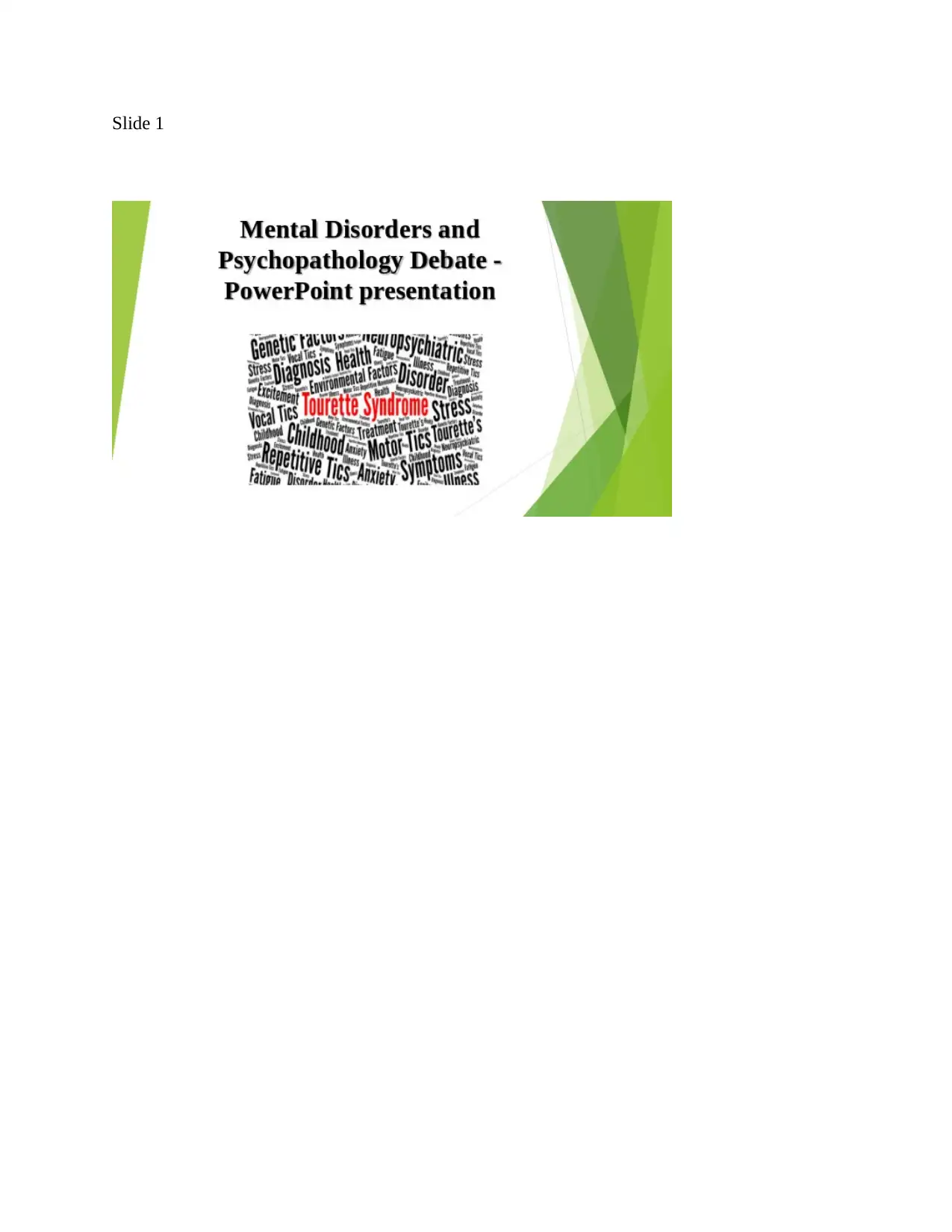
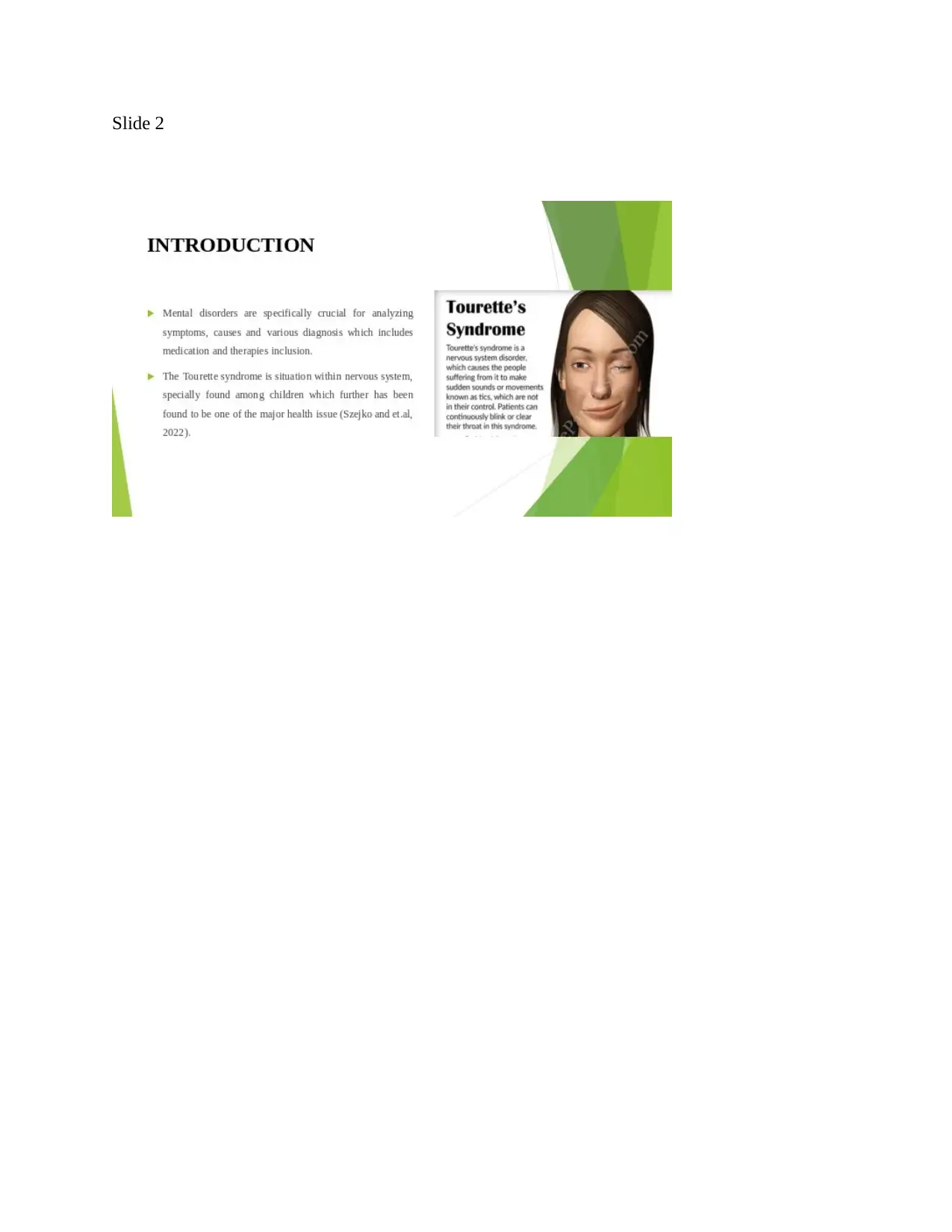
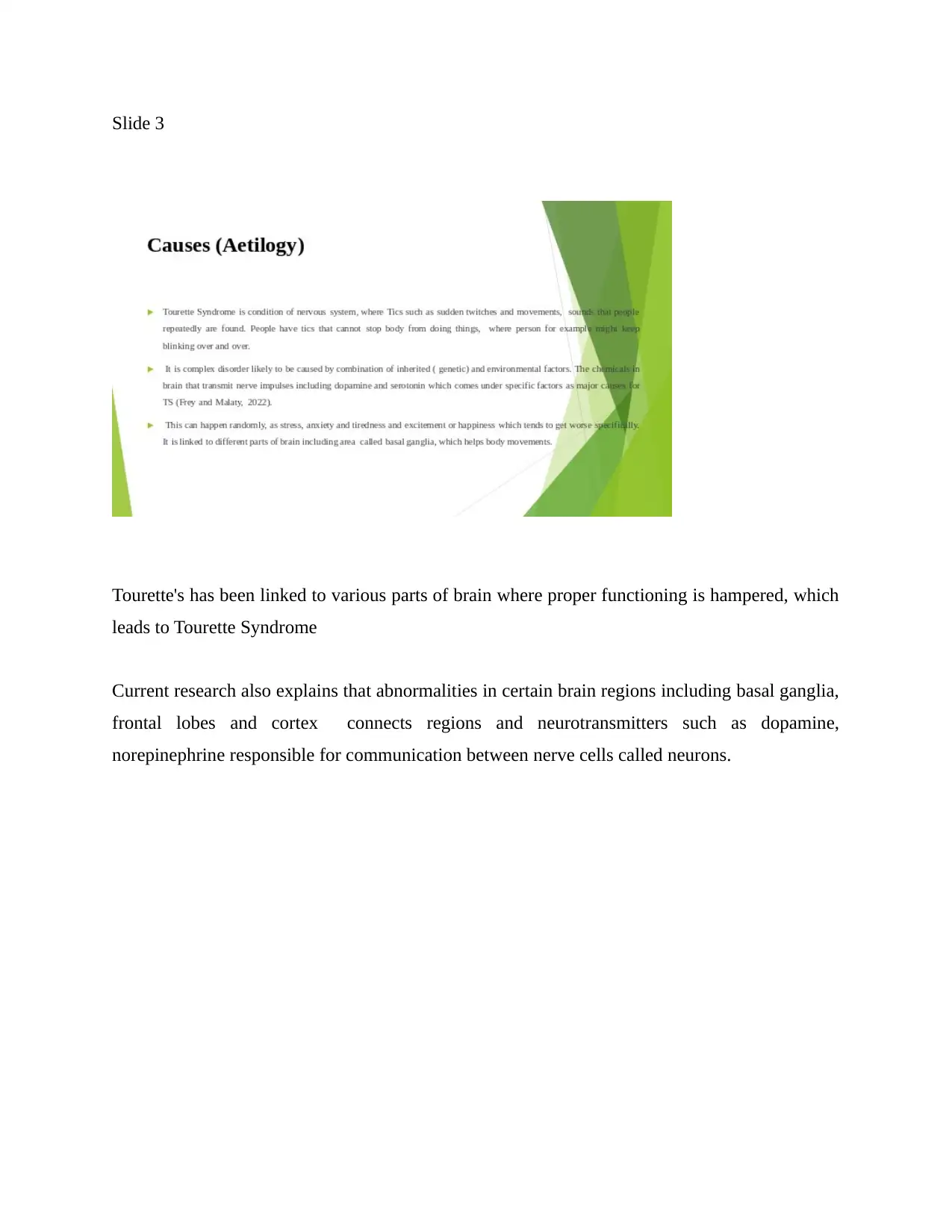

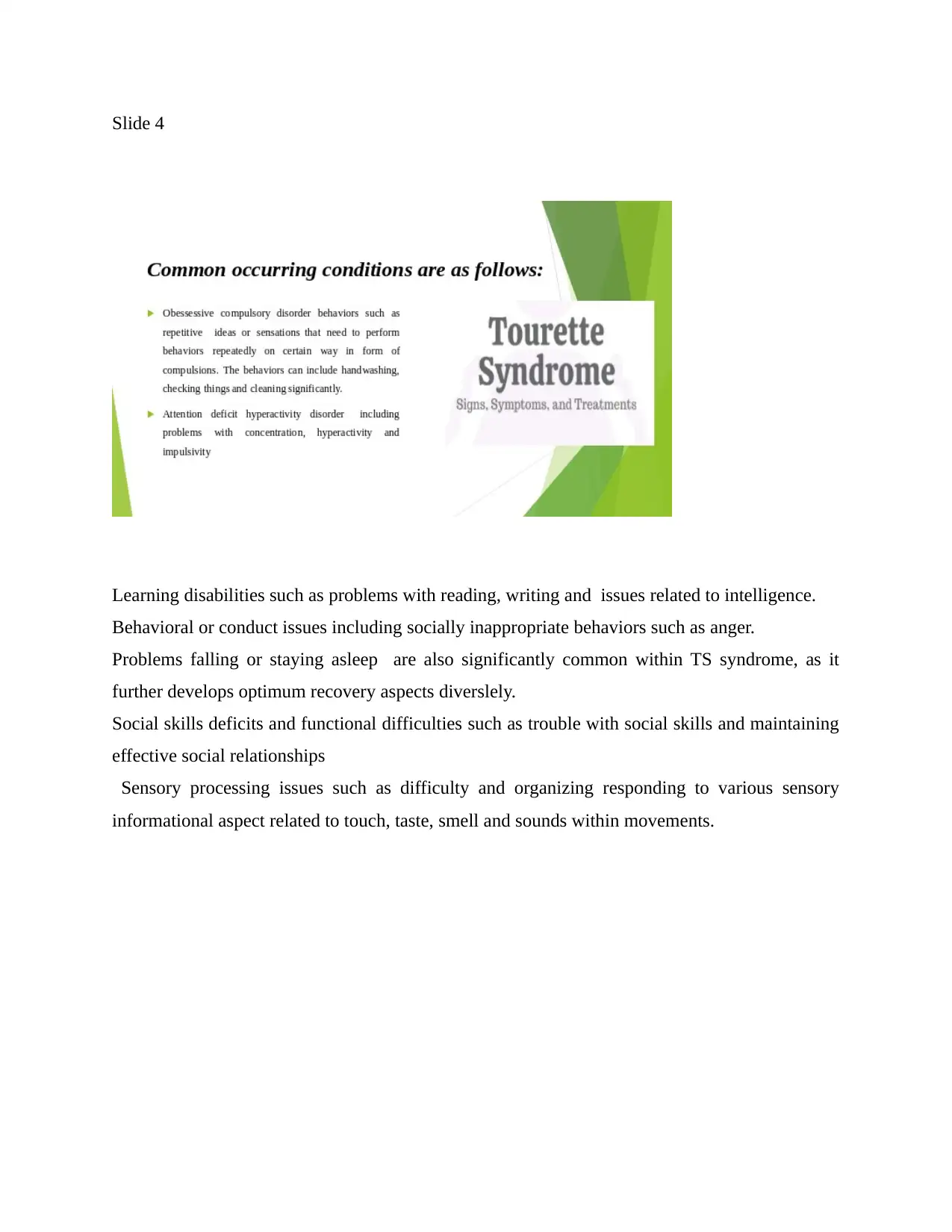
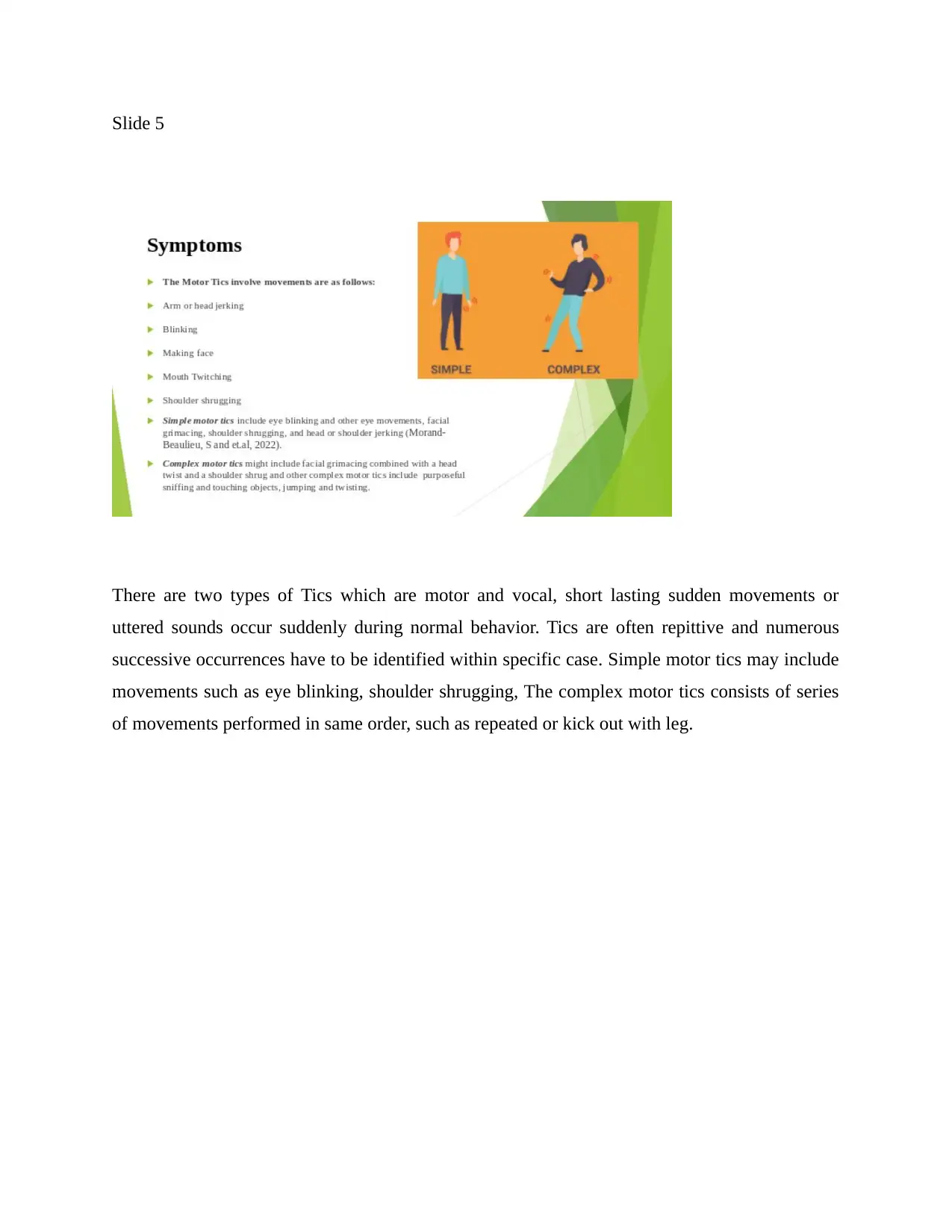
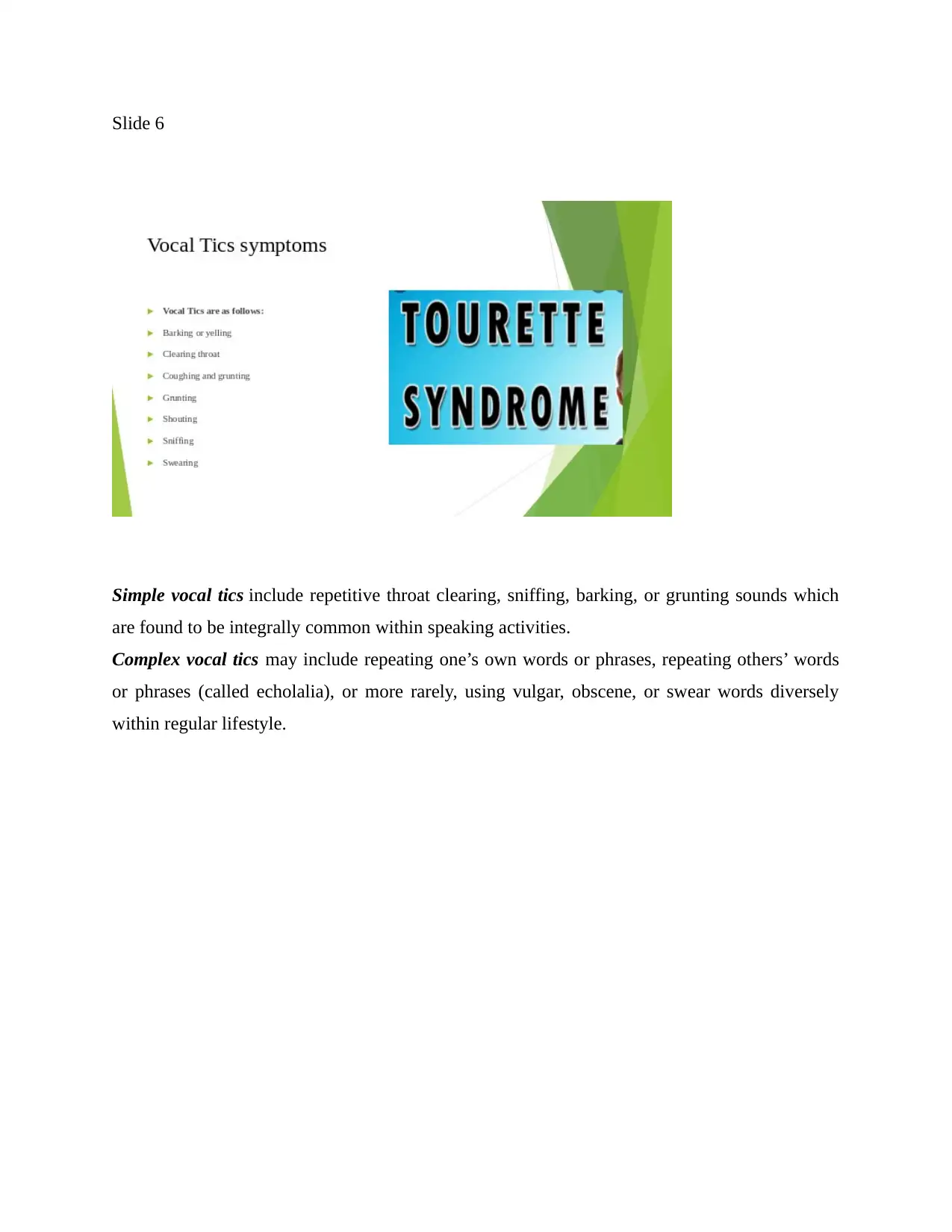
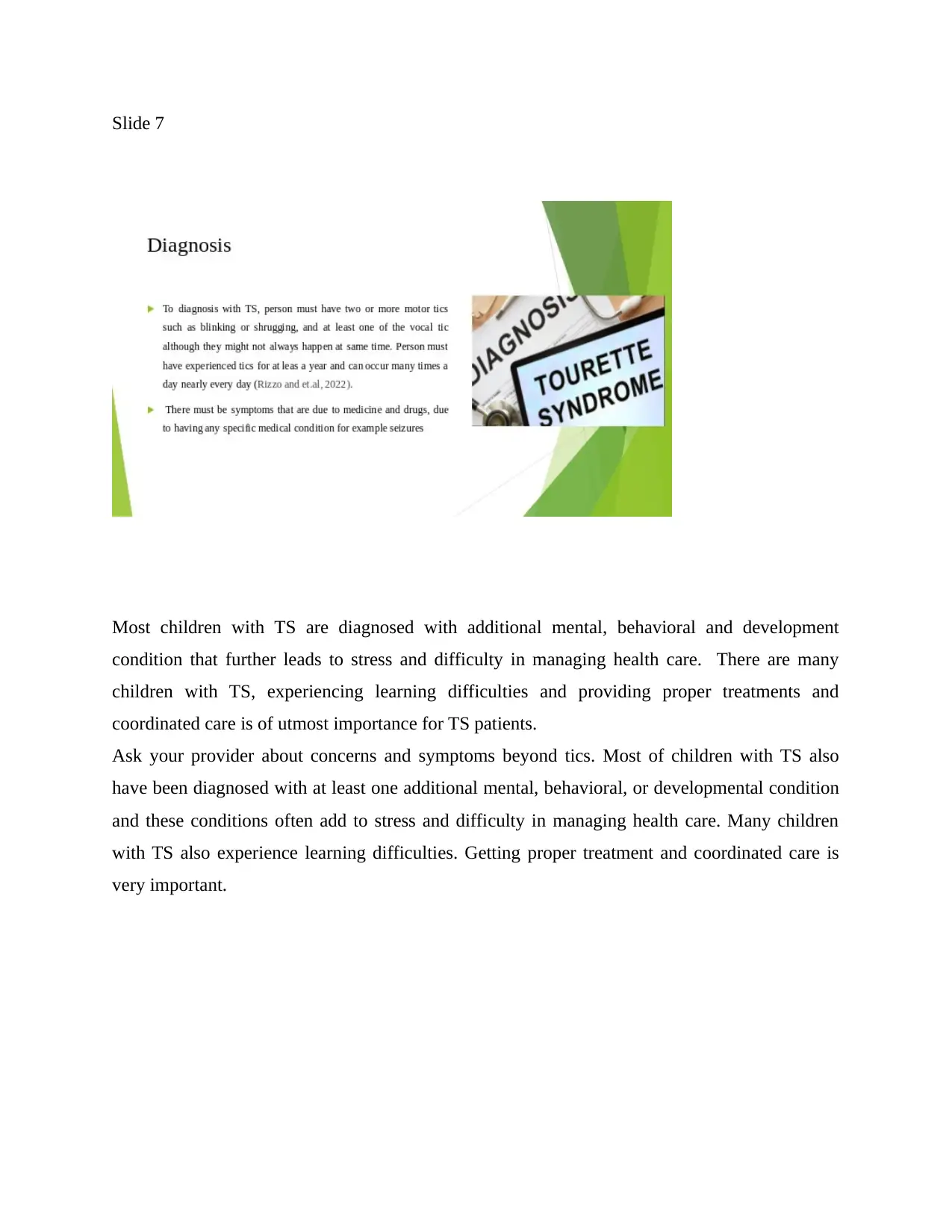
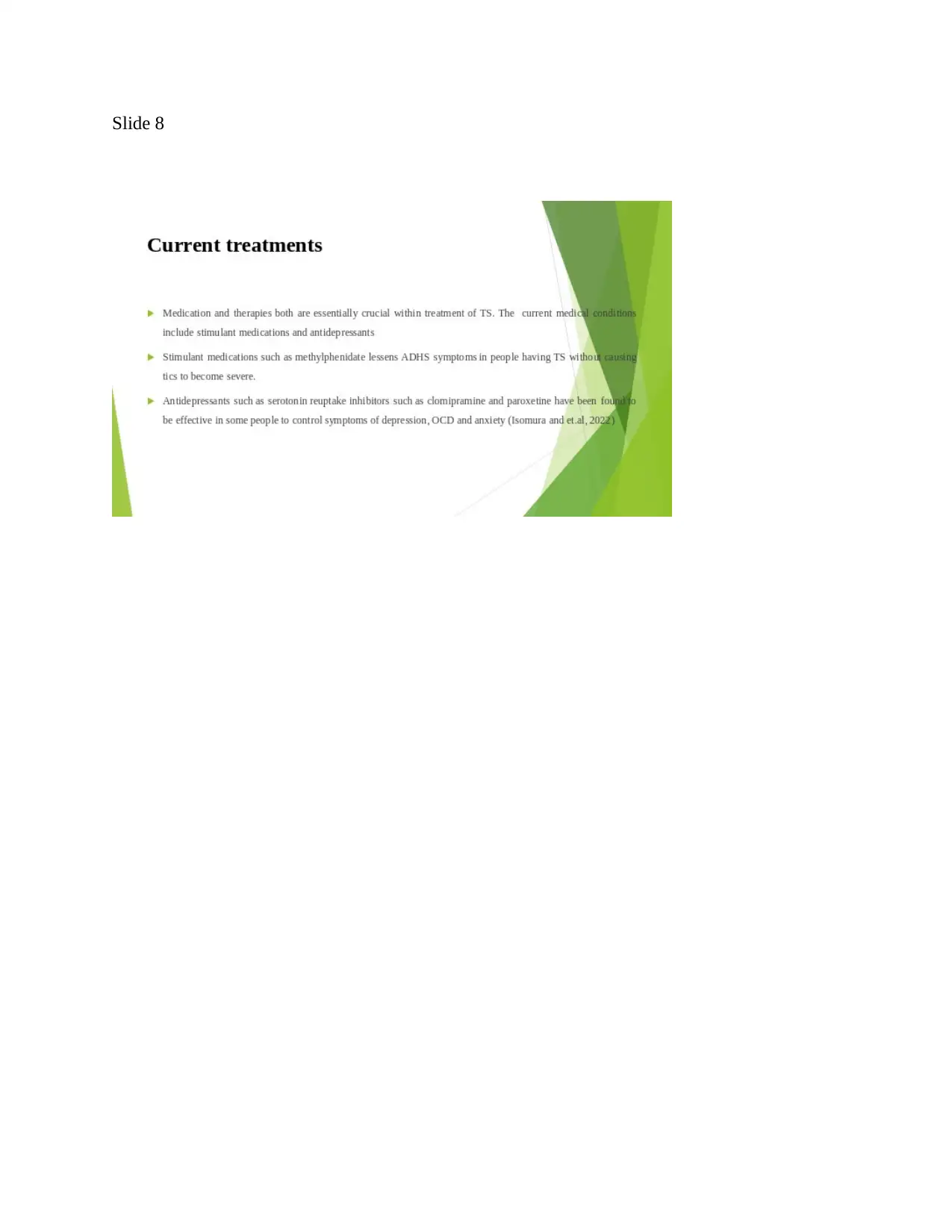
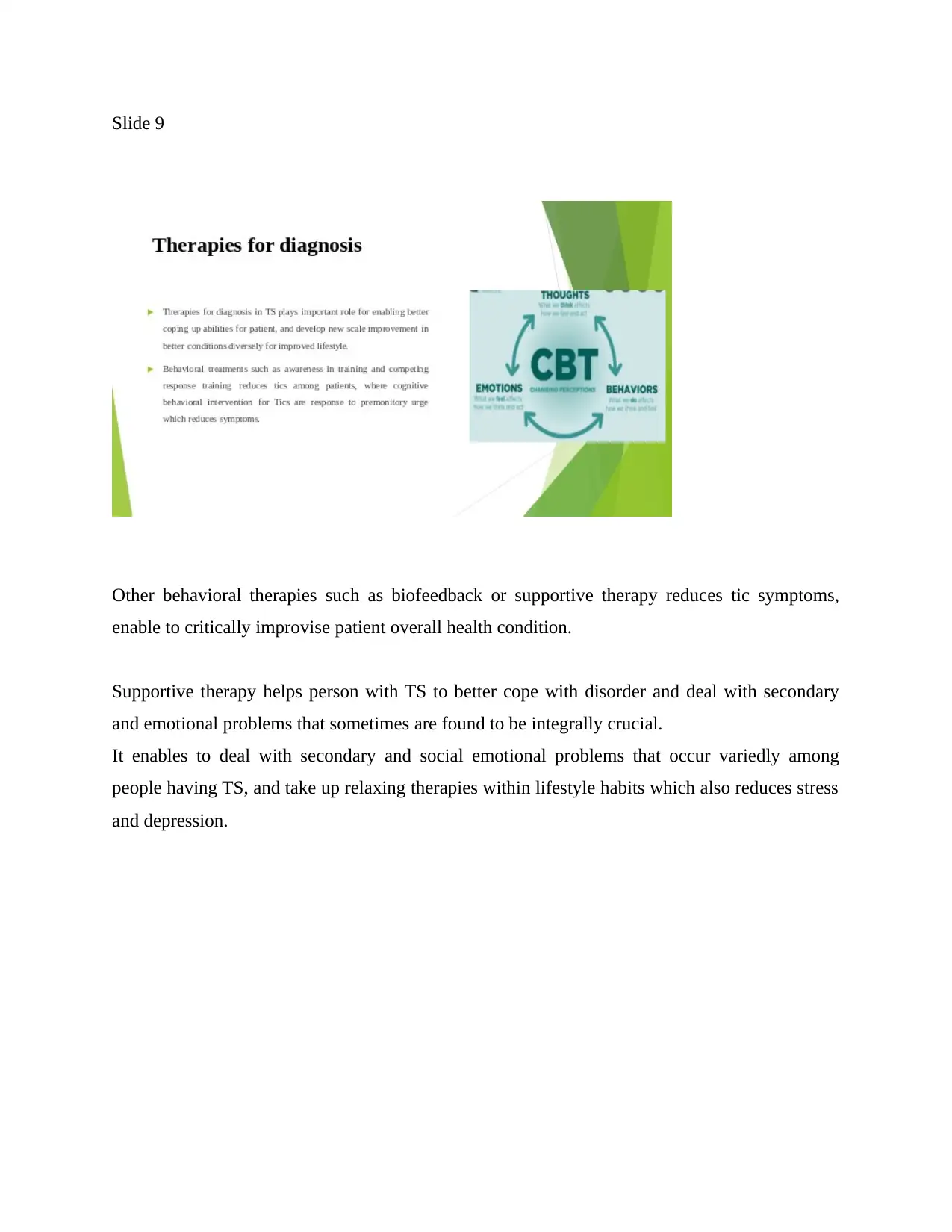
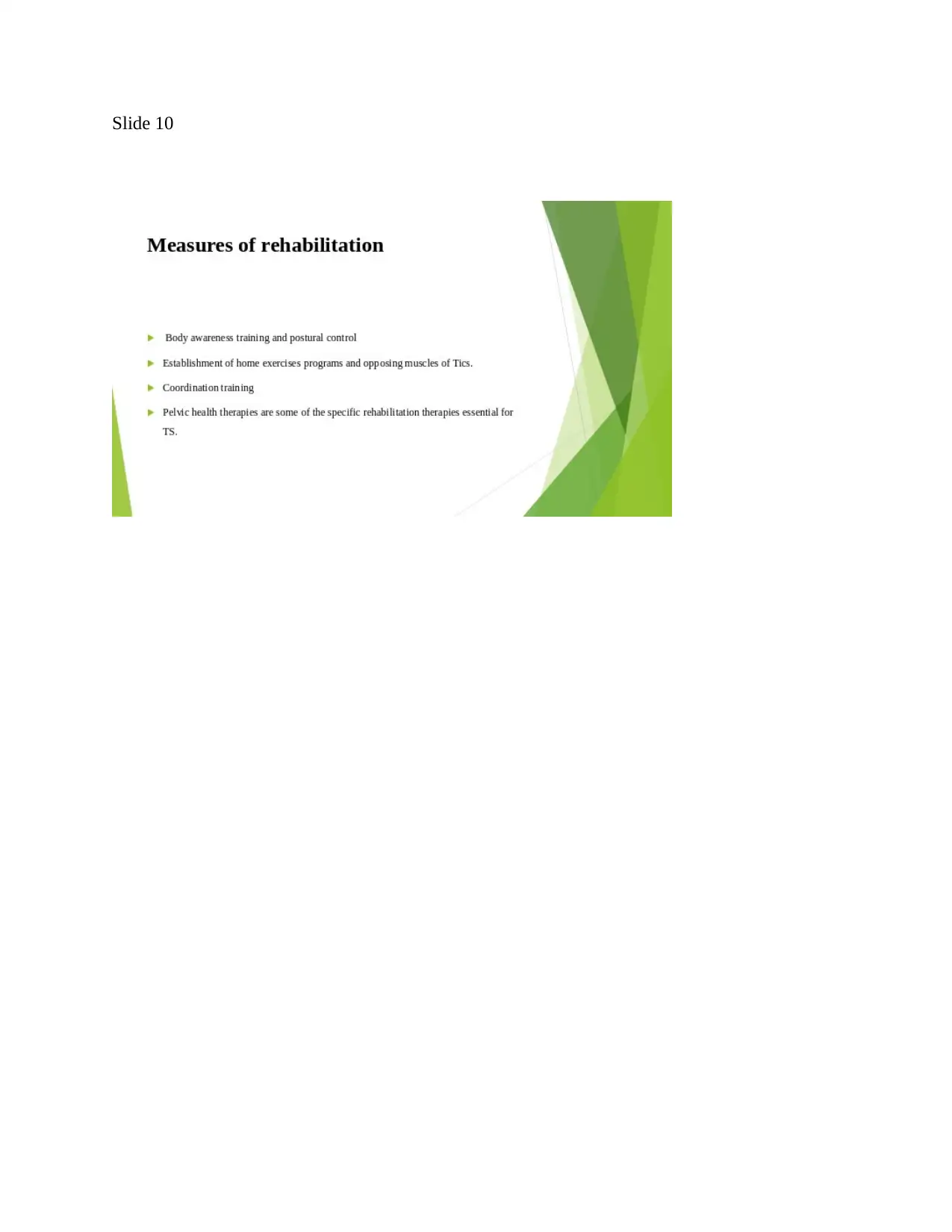
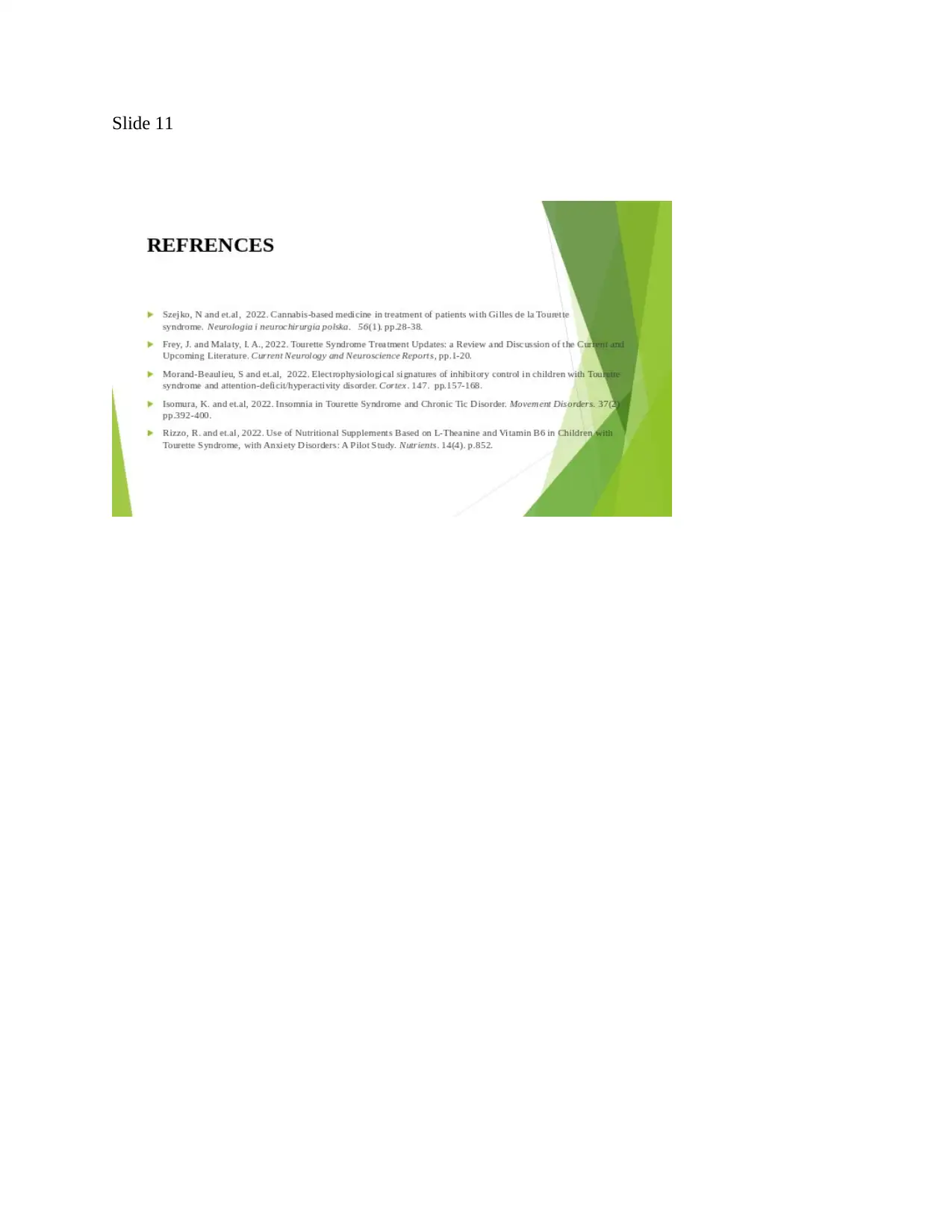

![[object Object]](/_next/static/media/star-bottom.7253800d.svg)